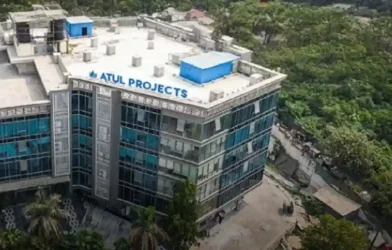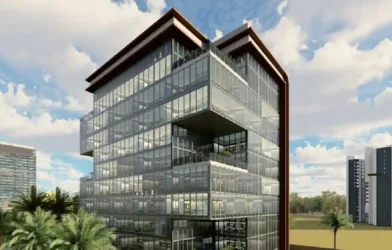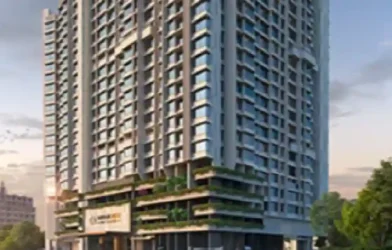Subtotal ₹0.00
While the real estate developers exude optimism about the festive season, the housing numbers tell a different story amidst continuous slide in sales this year. Particularly, the decline in sales just before the onset of Navratri, sends weak signals about the performance of residential real estate during the festive quarter of October-December 2025.
A recent Anarock report for the September quarter points to the dull scenario as the housing sales in the top 7 cities in Q3 2025 have seen a 9% annual decline, clocking 97080 units against 1,07,060 units in Q3 2024. However, according to Anuj Puri, Chairman, Anarock, the silverline is that sales continue to outstrip new supply and sales value is on the rise.
Anarock data points out that despite a dip in overall sales volume, the total sales value in the July-September period rose by 14% – from approx. INR 1.33 lakh Cr in Q3 2024 to approx. INR 1.52 lakh Cr in Q3 2025,thanks to high volume sales in the luxury and ultra-luxury segments.
Among the top 7 cities, MMR recorded the highest sales of approx. 30,260 units, followed by Pune with approx. 16,620 units. Cumulatively, the two western cities accounted for 48% of the total sales in the top 7 cities in Q3 2025. All top cities individually recorded a dip in yearly housing sales – except Chennai and Kolkata, which witnessed 33% and 4% yearly jumps, respectively.
These cities saw a marginal 3% increase in new housing supply, with approx. 96,690 units launched in Q3 2025 against 93,750 units in the corresponding period in 2024. Nevertheless, the fact that sales remained higher than launches indicates that the demand-supply equation remains robust.
City-wise, MMR topped new supply with approx. 29,565 units launched in the quarter, followed by Pune with approx. 19,375 units. Interestingly, while the other cities saw new supply decline annually, Pune, Kolkata and Chennai saw it increase by a whopping 56% and 38%, respectively.
In terms of budget segments, the INR 1.5 Cr plus luxury housing category witnessed the highest new supply of 38%, followed by the premium (INR 80 lakh – INR 1.5 Cr) segment with a 24% share. The mid-segment (INR 40–80 lakh) contributed a 23% share of the total new supply in the quarter, while the affordable segment’s share was the lowest at 16%.
Available housing inventory saw only a marginal yearly decline in the top 7 cities – from approx. 5,64,415 lakh units by Q3 2024-end to approx. 5,61,756 lakh units by Q3 2025-end.
Average residential prices in these cities collectively saw single-digit growth of 9% in Q3 2025 against Q3 2024. At 24%, NCR recorded the highest annual growth, followed by Bengaluru with a 10% increase. Interestingly, despite the monsoons and the perceived inauspicious ‘shraad’ period, housing sales in Q3 rose 1% quarterly. Overall, the housing market is so far reasonably steady in 2025, with expectations for a festive boost ahead for which developers have several projects lined up.
“The impact, if any, of the new H1-B visa norms announced by the US on Indian residential market bears close monitoring. While housing affordability remains a challenge across cities for many buyers, price growth has tapered down moderately compared to the previous few years, when we saw double-digit yearly growth in the top 7 cities,” says Puri.
New Supply Scenario
Over The top 7 cities saw approx. 96,690 units launched in Q3 2025, against 93,750 units in Q3 2024 – a 3% annual increase. On a quarterly basis, there was a 2% drop. In Q2 2025, approx. 98,630 units were launched across the top 7 cities.The key cities contributing to new supply in Q3 2025 were MMR (Mumbai Metropolitan Region), Pune, Bengaluru and NCR (National Capital Region) which together accounted for 78% of the total addition.
- MMR saw approx. 29565 units launched in Q3 2025 – similar on a yearly basis and a 5% quarterly increase. Over 35% of the new supply during the quarter was added in the affordable segment priced below INR 40 lakh.
- Pune added approx. 19375 units Q3 2025, witnessing a huge yearly jump of 56% and a 36% quarterly supply increase. Over 74% of the new supply was added in the mid and upper-mid-segment (INR 40 lakh – INR 1.5 Cr)
- Bengaluru added approx. 15190 units in Q3 2025 – a yearly decline of 5% and a 1% quarterly drop. Approx. 79% of the new supply was added in the INR 80 lakh – INR 2.5 Cr budget segment.
- NCR saw a 11% yearly drop in new launches, with approx. 12645 units in Q3 2025. On a quarterly basis, the market saw a 33% decline compared to Q2 2025. A massive 70% of the new supply in the quarter was added in the luxury segment (>INR 1.5 Cr)
- Hyderabad added approx. 8630 units in Q3 2025 compared to 13,890 units in Q3 2024 – a 38% yearly decline and a 22% quarterly drop in new launches. A whopping 87% of the new supply was added in the premium, luxury, and ultra-luxury segments (priced upward of INR 80 lakh)
- Chennai added approx. 6395 units in Q3 2025, seeing an 38% yearly rise but a 25% quarterly decline. Over 93% of the new supply was added in the mid, upper-mid and luxury segment priced within INR 40 lakh – INR 2.5 Cr.
- Kolkata added approx. 4890 units in Q3 2025, a whopping 56% annual increase and a significant 95% rise over the previous quarter. Approx. 75% of the new supply was added in the mid and upper mid segments priced within INR 40 lakh to INR 1.5 Cr.
| City wise Supply (In Units) and Q-o-Q percentage change | |||||
| Cities Name | Q3-2025 | Q2-2025 | % Change (Q2-2025 Vs Q3-2025) | Q3-2024 | % Change (Q3-2024 Vs Q3-2025) |
| NCR | 12,645 | 18,760 | -33% | 14,130 | -11% |
| MMR | 29,565 | 28,165 | 5% | 29,615 | 0% |
| Bangalore | 15,190 | 15,345 | -1% | 15,915 | -5% |
| Pune | 19,375 | 14,220 | 36% | 12,450 | 56% |
| Hyderabad | 8,630 | 11,105 | -22% | 13,890 | -38% |
| Chennai | 6,395 | 8,525 | -25% | 4,620 | 38% |
| Kolkata | 4,890 | 2,510 | 95% | 3,130 | 56% |
| Total | 96,690 | 98,630 | -2% | 93,750 | 3% |
Source: ANAROCK Research & Advisory
Residential Sales Rundown
Approx. 97,080 units were sold in Q3 2025 – a yearly decline of 9% and a quarterly increase of 1%. NCR, MMR, Bengaluru, and Pune together accounted for 78% of the sales in the quarter.
- MMR recorded the highest sales among top 7 cities in Q3 2025, with approx. 30260 units sold – a quarterly decrease of 3% and a 16% yearly drop
- Pune saw approx. 16620 units sold in Q3 2025, a decrease of 13% over Q3 2024 and an 8% quarterly increase over Q2 2025
- NCR saw approx. 13920 units sold in Q3 2025, a decline of 11% over last year and of 2% on a quarterly basis
- Bengaluru sold approx. 14835 units in Q3 2025, a quarterly and yearly decline of 2% and 1%, respectively
- Hyderabad saw approx. sold 11305 units sold in Q3 2025, decreasing by 11% over Q3 2024 and increasing marginally by 2% over Q2 2025
- Kolkata saw approx. 4130 units sold in Q3 2025, increasing by 17% over the previous quarter and by 4% over the corresponding quarter in 2024
- Chennai saw approx. 6,010 units sold 6010 units sold during the quarter – increasing by 6% quarterly and by significant 33% annually
| City wise Absorption (In Units) and Q-o-Q percentage change | |||||
| Cities Name | Q3-2025 | Q2-2025 | % Change (Q2-2025 Vs Q3-2025) | Q3-2024 | % Change (Q3-2024 Vs Q3-2025) |
| NCR | 13,920 | 14,255 | -2% | 15,570 | -11% |
| MMR | 30,260 | 31,275 | -3% | 36,195 | -16% |
| Bangalore | 14,835 | 15,120 | -2% | 15,025 | -1% |
| Pune | 16,620 | 15,410 | 8% | 19,045 | -13% |
| Hyderabad | 11,305 | 11,040 | 2% | 12,735 | -11% |
| Chennai | 6,010 | 5,660 | 6% | 4,510 | 33% |
| Kolkata | 4,130 | 3,530 | 17% | 3,980 | 4% |
| Total | 97,080 | 96,290 | 1% | 1,07,060 | -9% |
Source: ANAROCK Research & Advisory
Unsold inventory across the top 7 cities collectively saw only a marginal annual decline, standing at approx. 5,61,756 units by Q3 2025-end. In the previous quarter, inventory remained steady at approx. 5,62,148 units.
Price Performance
After staggering year-on-year average price growth in the last three years, the top 7 cities saw some relief with a collective average price growth of just 9% annually – from INR 8,390/sq. ft. in Q3 2024 to INR 9,105/sq. ft. in Q3 2025. Among the top 7 cities, NCR saw the highest 24% annual jump in average prices. On a quarterly basis, average prices in the top 7 cities rose by just 1%.














